Energy method
Assume oscillation is \$v_o = A \sin (\omega t)\$. Current and instantaneous power going into each element is (respectively)
Capacitor
\$i_C(t) = C \frac{d v_o}{dt} = C\omega A \cos(\cdot)\$
\$P_C(t) = C A^2 \omega\sin(\cdot) \cos(\cdot)\$
Inductor
\$i_L(t) = \frac{-A \cos(\cdot)}{\omega L}\$
\$P_I(t) = \frac{-A^2 \sin(\cdot) \cos(\cdot)}{\omega L}\$
Note that
- the capacitor and inductor powers are exactly opposite phase; i.e. they are exchanging energy with each other.
- At perfect sinusoidal oscillation and steady state, \$P_C = -P_I\$, i.e; \$\omega^2 = \frac{1}{LC}\$
Admittance
\$i_G(t) = G \cdot A \sin (\omega t)\$
\$P_G(t) = G A^2 \sin^2(\cdot)\$
Source
\$i_S(t) = -H \cdot A \sin (\omega t)\$ when \$v(t) \cdot H < I_{max}\$
\$P_S(t) = -H A^2 \sin^2(\cdot)\$ when \$v(t) \cdot H < I_{max}\$
\$P_S(t) = -I_{max} A \sin(\cdot)sgn(\sin(\cdot))\$ when \$v(t) \cdot H > I_{max}\$
-ve sign shows that power is coming out of the device.
Analysis of energy
During the oscillation \$v(t)\$, the circuit goes through points 1&2 or 3&4 explained below.
When \$H = G\$ and \$H \cdot v(t) < I_{max}\$, The dissipation in the admittance is exactly supplied by the source and we have steady oscillation. This may be what the OP has mentioned in their Question.
When \$H = G\$ and \$v(t) > I_{max}\$ We can see that there is a short fall in the power supplied by the source when compared to the power consumed by the admittance. So the perfect balance between \$P_C\$ and \$P_I\$ is disturbed. Energy is taken from them. This energy is not supplied back to them during the time instants where the instantaneous voltage is low since the condition \$H = G\$ ensures that the source supplied just enough power which is required by the admittance. Hence through out the cycle energy decreases until the amplitude is small enough for the circuit to remain in point 1 above through out the cycle.
When \$H > G\$ and \$G \cdot v(t) < I_{max}\$. The source supplies more power than the admittance can dissipate. This gets stored in the inductance and capacitance.
When \$H > G\$ and \$G \cdot v(t) > I_{max}\$. The admittance consumes more power than the source can provide. This gets taken from the inductance and capacitance. further analysis is need to see if this shortfall can be taken from point 3 above or if the energy stored in point 3 got wasted in the harmonics of the non-sinusoidal waveform.
Note
It can be noted that some assumptions are made in the answer above (perfect sinusoidal oscillation, etc.) and the answer is not mathematically rigorous. It should be taken only as a starting point for an analysis involving energy. There are established methods for limit cycle amplitude prediction in literature as I have mentioned in the comment to OP's question.
